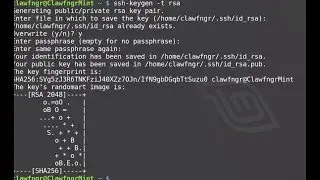What is Kubernetes?
You have probably heard of the open-source automation platform Kubernetes. It’s becoming popular. But what is Kubernetes? Let’s find out.
Meet Bob. Bob loves working with containers. Think of them as light-weight virtual machines. Bob designs his application using containers. It’s working great. So Bob goes ahead and deploys the application.
The application becomes popular. To keep up, Bob needs to scale his resources. Now, instead of a handful, he has to deal with hundreds of containers. Bob is overwhelmed. He needs a simple way to automate the process.
Kubernetes comes to the rescue. In Kubernetes, there is a Master node and there are multiple worker nodes. Each worker node can handle multiple pods. Pods are just a bunch of containers clustered together as a working unit. So Bob starts designing his application using pods.
Once Bob has his pods ready, he tells the Master node the pod definitions and how many he wants to be deployed.
From that point, Kubernetes is in control. It takes the pods and deploys them to the worker nodes. If a worker node goes down, Kubernetes starts new pods on a functioning worker node.
Bob doesn’t have to worry about the complexity of managing containers anymore. He can spend time improving his application and adding new features to it. Bob is happy.
Kubernetes was originally designed by Google. Then it was donated to the Cloud Native Computing Foundation.
It is a large and complex system for automating, deploying, scaling and operating application containers. But you don’t need to be overwhelmed.
You can start learning about Kubernetes using MiniKube. With Minikube, you can run a single-node cluster on your laptop. It is a great way to learn Kubernetes.
Thank you to Ben Sound for the audio on this video: https://www.bensound.com/
Check https://linuxhint.com/ for more linux resources
Check https://linuxhint.com/dev-ops/ for DevOps, Containers, Docker, and Kubernetes articles
https://linuxhint.com/kubernetes/ Kubernetes articles
![roblox# 456 [ Undertale legacy Fight timeline 3 ] [ All Strong Character + All Ulter Character ]](https://images.videosashka.com/watch/08KOpc48-Qc)


















